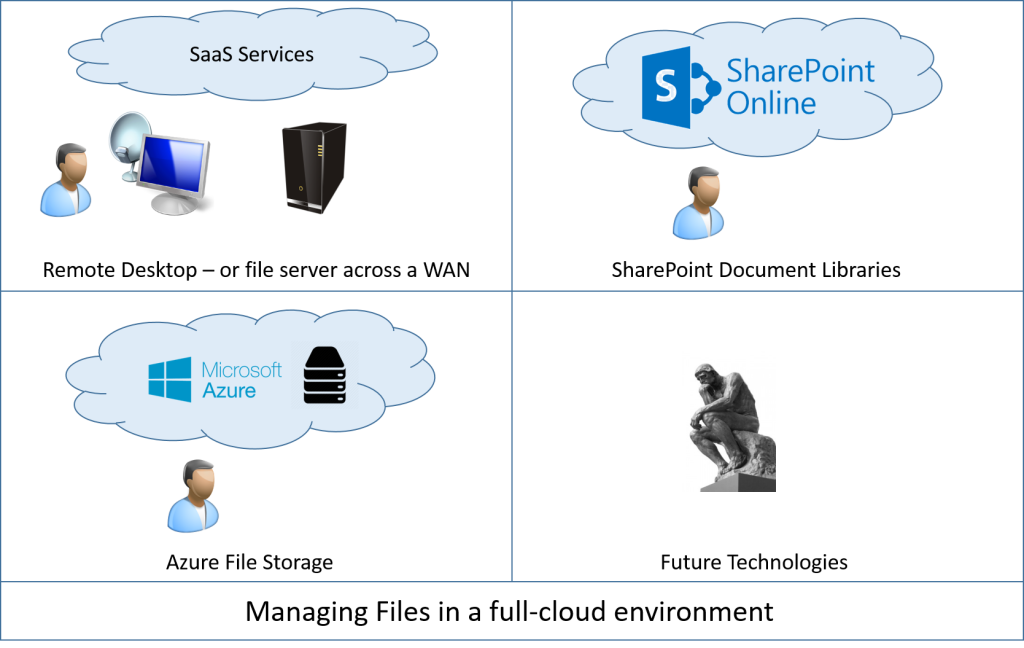 In this second post on “Cloud Journeys” we take a look at the conundrum relating to file management in a cloud environment. In the first post in the series we saw how ‘remote desktop’ can provide a silver bullet for cloud in some circumstances, but there are some downsides to this outlay for some organisations, in particular:
In this second post on “Cloud Journeys” we take a look at the conundrum relating to file management in a cloud environment. In the first post in the series we saw how ‘remote desktop’ can provide a silver bullet for cloud in some circumstances, but there are some downsides to this outlay for some organisations, in particular:
- The prescriptive nature of a full remote desktop does not fit well for some business, while others run applications that simply don’t work in remote desktop.
- Remote desktop generally requires pretty significant IaaS outlay, which can be costly.
Businesses that are able to move more fully towards SaaS, and wish to reduce IaaS outlay can face a challenge as to what to do with files. While applications can often readily be moved to SaaS, there is no instant SaaS solution that can replace the file server – in particular for a company with a large ‘sprawling’ file server with myriad data types.
There are some solutions (that can work for some businesses), but no silver bullet yet. For businesses whose files are limited to office documents, a possible solution can be SharePoint Online document libraries. Also of interest is Microsoft’s recently announced ‘Azure File Storage’ allowing the delivery of SMB shares directly out of Azure.
The aspect of files used for integration across applications can be vexing for cloud architects, but new technologies and better networking will hopefully see this decline as an issue in the coming years. A Microsoft insider recently informed me that ‘something new relating to cloud and file services’ was in the works at Microsoft, but he remained cagey when pressed for more information.

